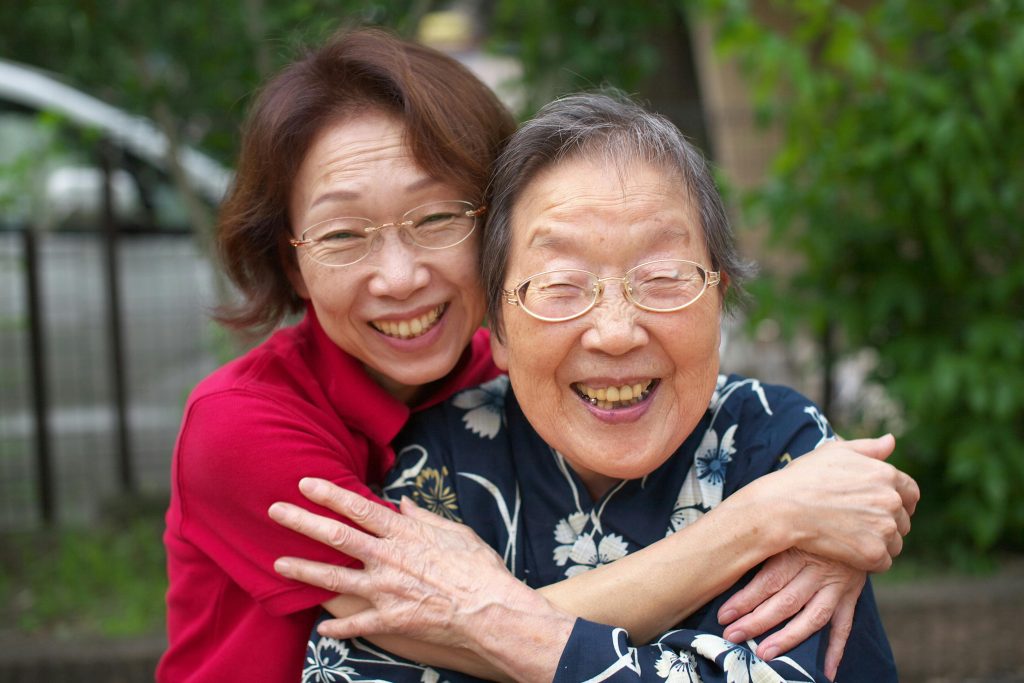In an era where longevity is celebrated, the importance of fostering healthy aging transcends beyond the physical to include the often-overlooked aspect of social well-being. Navigating the golden years, our seniors are confronted with a silent adversary: senior isolation. This pervasive issue not only impacts the quality of life but also poses critical health risks. Recognizing the intrinsic value of emotional connections is essential in creating a robust support system for our aging population.
Understanding that a community-engaged elder is a thriving one, modern eldercare solutions are increasingly focusing on holistic approaches that encompass mental, emotional, and social health. With concerted efforts, we can transform the landscape in which our elders live, replacing isolation with a tapestry of meaningful interactions and valued camaraderie. Join us as we delve into innovative strategies and actionable insights to enrich the lives of our beloved seniors through connection and care.
Understanding the Impacts of Isolation and Loneliness
As we delve deeper into the silent epidemic affecting our senior community, it is critical to discern the nuance between feeling lonely and being socially isolated. Notably, these conditions often intersect, amplifying their debilitating effects on elderly individuals’ lives. Their relevance to today’s aging society necessitates a clearer understanding of their consequences and the urgent addressing of elder social needs.
Defining Loneliness vs. Social Isolation
Loneliness is an internal feeling of solitude, characterized by the distressful sentiment of being alone regardless of the quantity of social interaction. Conversely, social isolation is the objective lack of social contacts, which can be quantified and observed externally. Each condition, while distinct, can contribute to significant psychological anguish and deteriorating health among seniors.
Health Risks Associated with Isolation in the Elderly
- Increased risk of high blood pressure and heart disease
- Obesity due to a lack of physical activity and social engagements
- A compromised immune system leads to frequent infections
- Health implications stemming from acute loneliness distress
The Physical Toll of Isolation
- Increased risk of cardiovascular diseases
- Impaired immune system function
- Higher levels of inflammation
- Difficulty in maintaining healthy lifestyle habits
The Mental and Emotional Burden
The impact of loneliness and isolation extends beyond physical well-being, intruding into the realms of mental and cognitive health. A concerning correlation has been established that associates these states with enhanced susceptibility to cognitive impairment, including Alzheimer’s disease, as well as various forms of emotional distress such as anxiety and depression. Further magnifying the gravity of this issue is the pivotal role social interactions play in maintaining the cognitive acuity and emotional resilience of our elderly population. Here are other impacts of social isolation and loneliness on seniors:
- Elevated levels of anxiety and depression
- Decreased cognitive function
- Impaired emotional well-being
- Higher susceptibility to stress and negative emotions
Identifying the Causes of Social Disconnection

Life Transitions and the Risk of Isolation
Significant transitions such as retirement or the loss of a spouse can serve as catalysts for social isolation. These events, often signaling a broader shift in daily habits and social circles, underscore the necessity of proactive community support and engagement to maintain an elder’s sense of inclusion.
Physical and Sensory Impairments as Barriers
Sensory impairments such as hearing loss and vision problems are more than mere inconveniences; they pose serious barriers to social interaction and, by extension, can intensify feelings of disconnection. Recognizing and addressing these age-related changes are essential for promoting accessible and fulfilling social engagements.
The Role of the COVID-19 Pandemic in Senior Isolation
The COVID-19 pandemic has had a profound social impact, particularly among the senior population. Increased health risks have necessitated periods of quarantine, stretching the thread of social fibers to a breaking point. The pandemic’s legacy thus highlights critical areas for improvement in both crisis response and everyday connectivity.
- Encourage community programs designed to bridge the gap for elders facing transportation barriers.
- Promote the usage of assistive technologies to help overcome sensory impairments.
- Institute policies that safeguard seniors during health crises while keeping their social needs in view.
Only through a multifaceted approach can we effectuate meaningful connections and reduce the risk of isolation among our beloved seniors.
Strategies for Enhancing Social Connection among Seniors
To reduce the sense of isolation prevalent among seniors, a shift towards engaging in consistently purposeful activities serves as a potent intervention. Not only do these activities provide a sense of community and companionship, but they also promote various facets of senior health and overall well-being.
Volunteering: A Path to Purpose and Connection
Volunteering emerges as a highly impactful way for seniors to build meaningful connections. This altruistic engagement fosters a deep sense of purpose and can effectively counter feelings of loneliness, opening doors to new friendships and enriching community ties. The harmonious merge of contributing to society and enhancing personal social networks exemplifies the value of purposeful activities in aging populations.
Leveraging Technology to Bridge the Gap
Staying connected with loved ones, even when physical distance separates us, has become easier than ever thanks to the advancements in technology. With the click of a button, we can bridge the gap and create a sense of closeness that transcends physical boundaries.
One powerful tool for maintaining relationships is video calling. Whether it’s FaceTime, Skype, or Zoom, seeing the faces of our loved ones and hearing their voices in real time can make a world of difference. These virtual meetups allow us to share special moments, engage in meaningful conversations, and feel connected, no matter the miles that separate us.
But video calls are just the beginning. Social media platforms and online communities also provide valuable avenues for staying connected. Through platforms like Facebook, Instagram, and Twitter, we can share updates about our lives, engage in conversations, and offer support to our friends and family. These platforms bridge the gap between physical meetings and allow us to stay up to date with the lives and well-being of our loved ones.
Beyond video calls and social media, there are also specific online platforms designed to bring people together. Whether it’s joining a virtual cooking class, participating in online support groups, or playing multiplayer games, these platforms offer unique ways to connect with others who share similar interests or experiences. By utilizing technology to its fullest potential, we can find new opportunities for connection in the digital world.
Adopting Pets for Companionship and Well-being
The introduction of companion animals into the lives of seniors is met with numerous benefits. Pets inherently provide a comforting presence, reduce stress levels, and have been shown to lower blood pressure. In homes where seniors can responsibly care for an animal, the partnership can stimulate daily purposeful activities and even gentle exercise in aging individuals, establishing a mutually beneficial relationship for both the pet and owner.
- Encouraging regular involvement in community events to foster a sense of belonging.
- Promoting group exercise such as walking clubs to merge the benefits of physical activity with social interaction.
- Supporting seniors in the process of learning to utilize technology for increased social engagement.
Building Meaningful Connections
Building and strengthening meaningful connections is crucial in combatting isolation and cultivating a sense of belonging. Meaningful relationships have the power to uplift our spirits, provide support during challenging times, and bring joy into our lives. Here are some practical ways to foster these connections:
- Active Listening: Take the time to truly listen to others. Show genuine interest in their thoughts, feelings, and experiences. Practice empathetic listening by validating their emotions and making them feel heard.
- Sharing Experiences: Open up and share your own experiences, stories, and perspectives with others. This vulnerability helps create a deeper connection and builds trust. Encourage others to share their own stories as well.
- Expressing Gratitude: Regularly express appreciation and gratitude for the people in your life. Whether it’s a simple thank you, a heartfelt note, or a small gesture of kindness, expressing gratitude strengthens bonds and fosters positivity.
- Engaging in Meaningful Activities: Find common interests and engage in activities that bring you joy. Whether it’s taking a walk together, cooking a meal, or participating in a shared hobby, shared experiences create lasting connections.
- Maintaining Regular Contact: Stay in touch with your loved ones consistently, whether it’s through phone calls, video chats, or even handwritten letters. Regular communication helps maintain the connection and lets others know you are there for them.
Remember, building meaningful connections takes time and effort. Be patient and invest in relationships that matter to you. By building these connections, you can combat isolation and create a strong support network that enriches your life.
Cultivating a Vibrant Community for Seniors

At Total Life, we’re dedicated to creating such an enriching environment for seniors by providing resources, support, and platforms that facilitate connection, learning, and joy in later life stages. If you or a loved one is seeking to bridge the gap of isolation and join a community that cares deeply about senior well-being, Total Life is here to help. Visit our website to learn more about how we can assist in cultivating meaningful connections and vibrant communities for our cherished senior population. Together, we can ensure that every senior feels valued, connected, and engaged.







